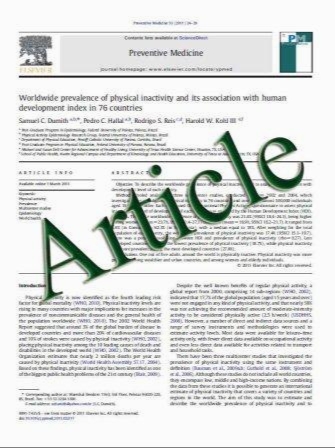Changes in trabecular and cortical bone microarchitecture at peripheral sites associated with 18 months of teriparatide therapy in postmenopausal women with osteoporosis
- نوع فایل : کتاب
- زبان : انگلیسی
- مؤلف : H. M. Macdonald & K. K. Nishiyama & D. A. Hanley & S. K. Boyd
- چاپ و سال / کشور: 2010
Description
Summary We used high-resolution peripheral quantitative computed tomography (HR-pQCT) to monitor changes in bone microarchitecture and strength at the distal radius and tibia associated with 18 months of teriparatide therapy in postmenopausal women with osteoporosis. Despite treatment-associated declines in total and cortical BMD, trabecular thinning and reduced trabecular bone volume, bone strength did not change significantly from baseline. Introduction Teriparatide is an established anabolic therapy for osteoporosis; however, treatment effects at the distal radius are unclear. Therefore, we aimed to monitor changes in bone microarchitecture and estimated strength at the distal radius and tibia in osteoporotic postmenopausal women. Methods We used high-resolution peripheral quantitative computed tomography (Scanco Medical, Switzerland) to perform a standard three-dimensional morphological analysis of the distal radius and tibia in 11 osteoporotic postmenopausal women (mean age, 68.7±12.7 years) at baseline, 6, 12, and 18 months after initiation of 20 μg/day of teriparatide. Ten of the women received bisphosphonate therapy prior to starting on teriparatide. In addition to the standard analysis, we quantified cortical bone mineral density (BMD), porosity, and thickness using an automated segmentation procedure and estimated bone strength (ultimate stress) using finite element analysis. Results After 18 months, we observed a decrease in total BMD (p=0.03) at the distal radius and a decrease in cortical BMD at the distal radius (p=0.05) and tibia (p=0.01). The declines in cortical BMD were associated with trends for increased cortical porosity at both sites. At the distal radius, 18 months of teriparatide treatment was also associated with trabecular thinning (p=0.009) and reduced trabecular bone volume ratio (p=0.08). We observed similar trends at the distal tibia. Despite these changes in bone quality, bone strength was maintained over the 18-month follow-up. Conclusions The observed changes in cortical bone structure are consistent with the effects of parathyroid hormone on intracortical bone remodeling. Controlled trials involving larger sample sizes are required to confirm the effects of teriparatide therapy on trabecular and cortical microarchitecture in the peripheral skeleton.
Osteoporos Int (2011) 22:357–362 DOI 10.1007/s00198-010-1226-1 Received: 20 November 2009 / Accepted: 1 March 2010 / Published online: 11 May 2010


